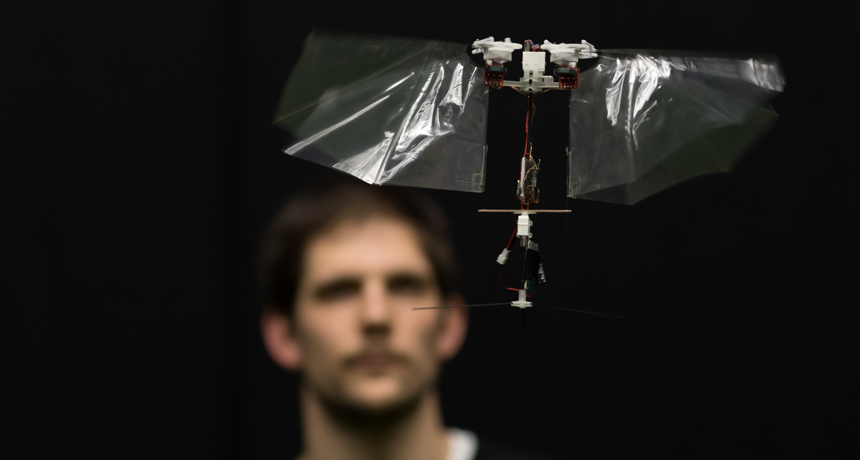This flying robot could reveal secrets of the aerial world of insects
The bot has already given scientists insight into how fruit flies execute rapid turns

SHOO FLY A new insect-inspired flying bot could be used to test ideas about how winged insects perform precise aerial maneuvers.
Henri Werij, TU Delft (CC BY-SA 4.0)





